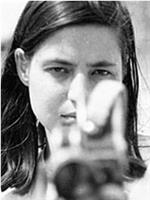玛尔塔 罗德里格兹简介
获奖情况
第32届柏林国际电影节 获得费比西奖(国际影评人联盟奖)。获奖影视: 《土地、记忆和未来之歌》
影人资料
Marta Rodríguez (born 1933) has never been merely an anthropologist or merely a documentary filmmaker. From her first film, CHIRCALES (THE BRICKMAKERS, 196672), to her present work, Rodríguez has always shown herself to be a politically committed, independent anthropological filmmaker who uses documentary to analyze the living and working conditions and the world view of peasants, native peoples, and workers in her native Colombia. The subjects themselves actively participate in the filmmaking process by critiquing the documentarist’s depiction of their world as the film is being made. Her documentaries typically take several years to produce because of budgetary limitations and the anthropological research required. Rodríguez’ work is not completed when the post-production process is over. Since she is an engaged filmmaker par excellence, she attends to questions of distribution and exhibition so that the documentary is turned back to its subjects, who can then debate the film and better analyze their own situations. Rodríguez, then, like the other members of the New Latin American Cinema movement that arose in the mid-1950s, views cinema as a powerful means to analyze socioeconomic and political reality and as a stimulus to the “lower” classes and marginal groups to better understand and/or to transform their politics and their lives.By the mid and late 1960s, when work on CHIRCALES was initiated, Colombia seemed on the verge of a sweeping sociopolitical transformation. Several independent guerrilla movements had begun to challenge the traditional power structure, which had long been dominated by the country’s two traditional parties, the Liberals and the Conservatives. A major challenge to the power of the traditional parties was mounted in the mid-60s by the radical Dominican priest and educator, Father Camilo Torres, who came from the country’s upper class. The charismatic Torres in 1965 created Frente Unido (the United Front Movement), which attempted to unite different popular movements in support of a common revolutionary program. When Torres’ Frente Unido effort did not receive the support he had hoped for, he joined the Army of National Liberation, a Guevarist guerrilla movement. He was killed in 1966 in his first armed action. The priest-turned-guerrilla Camilo Torres exerted a powerful influence on Marta Rodríguez — both as educator and as a visionary leftist political leader.All of Rodríguez’ documentaries have been made in collaboration with her spouse, Jorge Silva, who was best known as a cinematographer, a career he began after having worked as a still photographer. He died in 1987 after twenty years of distinguished work as a committed documentary filmmaker.A brief descriptive Rodríguez-Silva filmography follows. CHIRCALES examines the hellish life of a family of poorly paid, non-unionized brickmakers on the outskirts of Bogota. PLANAS: TESTIMONIO DE UN ETNOCIDE (PLANAS: TESTIMONY ABOUT ETHNOCIDE, 1970) is an example of denunciatory cinema. The film documents the genocide of an indigenous group and explores the economic and social causes of the slaughter. In CAMPESINOS (PEASANTS, 1974-76), the filmmakers analyze the violence and exploitation long visited on Colombia’s rural population. NUESTRA VOZ DE TIERRA, MEMORIA Y FUTURO (OUR VOICE OF LAND, MEMORY, AND FUTURE, 1973-80) uses fictional elements to explore the magic, myths, and legends of the Indian worldview. AMOR, MUJERES Y FLORES (LOVE, WOMEN AND FLOWERS, 1984-89) exposes the dangerous conditions for women workers in Colombia’s booming cut-flower trade. NACER DE NUEVO (TO BE BORN AGAIN, 1986-87) offers a moving portrait of two indigent seventy-year olds who must somehow get on with their lives after having lost everything in the landslides and floods triggered by the eruption of the Ruiz Volcano in 1985. —ejumpcut****

